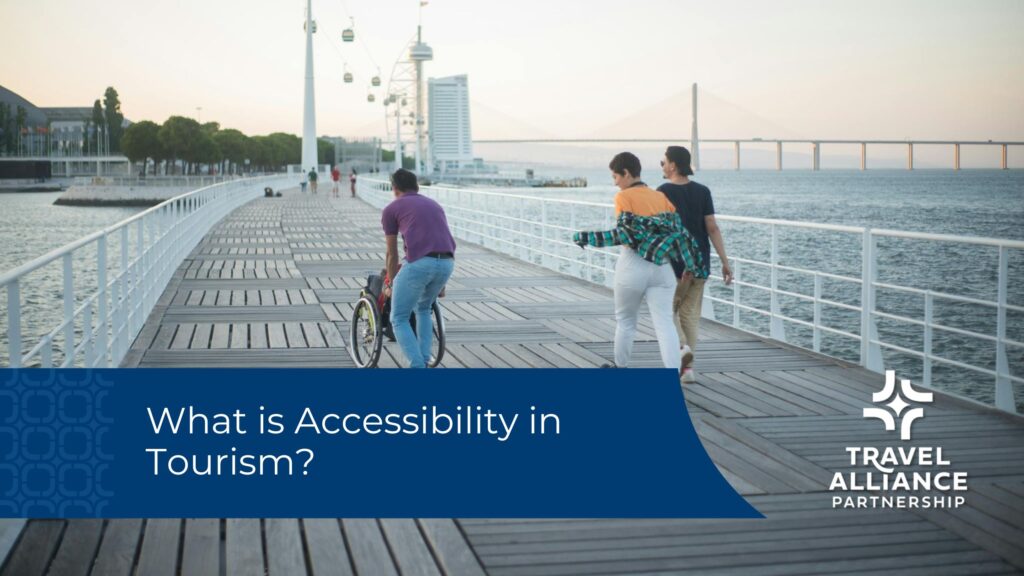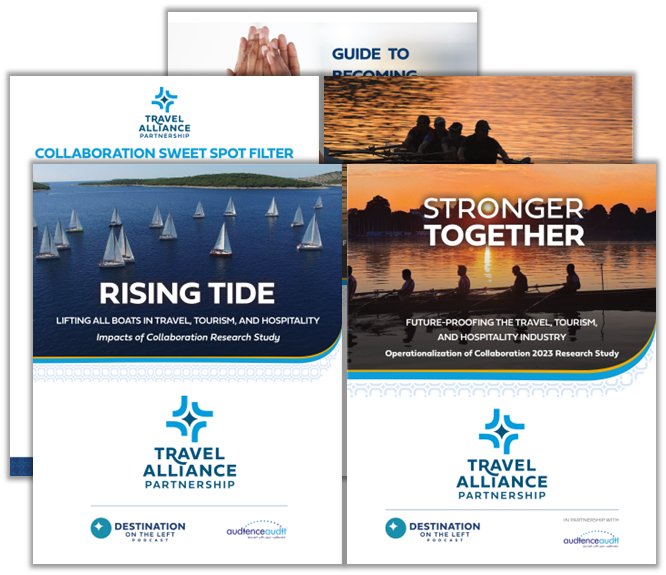What is Accessibility in Tourism?
Travel is an incredibly life-enriching and rewarding experience, yet it is still inaccessible to many people. About 15 percent of the world’s population live with different forms of disabilities. Without widespread accessibility in the tourism industry, this segment remains untapped. This not only limits individuals who are unable to access destinations or services on their own terms; it also holds back attractions and businesses from the $13 billion of annual spend within this market. It’s time for travel professionals to prioritize initiatives that make experiences more inclusive. Let’s look at how you can add accessibility while driving positive traveler experiences.

Accessibility of Information
Making accessibility information easily available creates an inclusive and welcoming atmosphere from the first time someone visits your website. It enables people with accessibility challenges to properly plan out their visit and also helps show that your destination values every visitor’s experience.
On Episode 103 of Destination on the Left, we spoke with Cory Lee, a travel blogger and accessibility advocate. When he is planning a trip, he searches for wheelchair accessibility on the destination’s website. If accessibility information isn’t readily available, it becomes very difficult for people with disabilities to plan their visit. DMOs can start by adding accessibility information to the FAQs section of their website and then incorporating the information throughout the site so it’s easily searchable.
Discover Lancaster is a fantastic example of a DMO making their accessibility information readily available. Discover Lancaster spent over a year developing a comprehensive guide on their website to show they are an accessible destination. Olivia Novak, Marketing Manager at Discover Lancaster, described how they worked with partners to create a list of all ADA-accessible attractions and hotels and provide local resources and travel tips for visitors with varying abilities. They also hosted a panel to educate partners. An influencer campaign will show what visiting Lancaster is like for individuals with varying abilities.
Where to Find Information
One of the most important things to remember is that decisions about accessibility should not be made without the individuals affected being part of the conversation.
In Episode 339 with Santiago C. Corrada, he recalls the moment he learned they needed to add accessibility to the diversity efforts at Visit Tampa Bay. The team brought in a group of ambassadors and influencers to consult on the development of videos, and campaigns. Now accessibility representation is integrated throughout all of their tourism marketing efforts.
When we spoke with Billy Kolber, CEO of Hospitable ME, at the Travel Unity Road Show he emphasized the importance of inviting historically marginalized or excluded groups to the table to help make informed decisions. By including these people in the conversations, destinations can make sure that their voices and experiences are reflected in all accessibility efforts.
At the Destinations International Annual Convention in 2022, we learned about resources for accessibility information. AccessNow is an app about accessibility in travel where travelers can log their experiences in a destination, much like other review sites. AccessOutdoors is a related app that maps the accessibility of outdoor trails (currently available for Canada). The best information comes from people living with disabilities. Residents in your destination are a great resource for getting the information travelers will need.
Inclusive Experiences
Accessibility goes beyond those facing physical disabilities. Creating inclusive experiences for people with other types of limitations opens opportunities for both the traveler and the destination.
Autism Certified City
We spoke with Marc Garcia of Visit Mesa (episode 275) about his journey helping Mesa, Arizona earn the first-ever Autism Certified City distinction. Garcia sought to have Mesa certified by the International Board of Credentialing and Continuing Education Standards. Over 58 businesses and almost 5,000 people in Mesa completed training to help the city receive its certification. These trainings taught people what the world looks like to someone who lives with autism. As a result of Garcia’s efforts, Visit Mesa booked several conferences and experienced a high return on investment.
After earning the certification, Visit Mesa continued its efforts to make the city welcoming for individuals with autism. They partnered with two microbreweries to release a Spectrum Double IPA in honor of National Autism Awareness Month. Destinations can learn from the efforts put forth by Garcia and the city of Mesa. There are many creative ways destinations, attractions and professionals in our industry can make individuals feel welcomed and safe.
Autism Nature Trail
Attractions looking to become more accessible can learn a valuable lesson from the Autism Nature Trail (ANT) at Letchworth State Park. Loren Penman (episode 221), a retired educator who brought the ANT to fruition, spoke with us about this first-of-its-kind experience. What started as a project with a focus on individuals on the spectrum resulted in an ADA-compliant one-mile natural trail with eight sensory stations. After learning the calming effects of the combination of moving water and pine trees, Penman worked with an expert from Colorado State University and a retired Speech and Language Pathologist to develop the trail. The ANT was paid for through a public fundraising initiative, raising $1.9 million in 10 months to fund the trail. It would not have been possible without collaboration and strong community partners.
The travel, tourism and hospitality industry can bring people together, bridge gaps between cultures and celebrate diversity. We need to take steps towards inclusivity and accessibility if travel is going to be an enriching experience for all. Let’s make the world more enjoyable for everyone by exploring opportunities to include detailed information about accessibility or teaming up with other organizations for memorable experiences that welcome everybody. Together, we can have a positive impact and create an even better world to be discovered.
Author
Related Posts
Welcoming All 2.0: Key Takeaways from Our Community Conversation on Inclusion in Tourism
In our rapidly evolving travel industry, the concept of being a “welcoming destination” is no longer simply about inviting more visitors. It’s about deeply understanding…
10 Must-Listen Podcasts for Travel, Tourism & Hospitality Professionals
I’ve had the joy of hosting Destination on the Left—an award-winning podcast spotlighting the travel, tourism, and hospitality industry—since 2016. My team and I believe…
